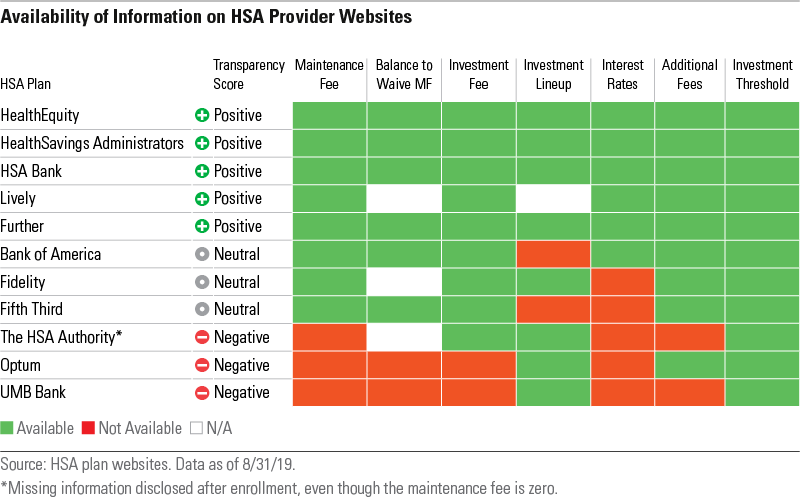Editor’s note: We have published new research and enhanced our methodology. Read our evaluation of the best HSA providers of 2022.
Health savings accounts offer better tax advantages than 401(k)s, IRAs, and 529 college saving plans, making them a valuable tool for investors. Contributions into HSAs are tax deductible, investment growth and interest are tax-exempt, and withdrawals avoid taxes if they’re spent on qualified medical expenditures.
But choosing an HSA can be challenging given the industry’s opaque and frequently changing nature.
That’s why we publish an annual Health Savings Account Landscape report that evaluates and ranks some of the most prominent HSA providers. The report also articulates what we consider best industry practices. For this year’s report, we assessed 11 of the top HSA providers available to individuals (as opposed to those HSAs offered through employers, where fees can vary substantially based on several factors).
Key highlights from our study
The providers in our report comprise about 60% of the HSA landscape. We looked at these providers through two different HSA use cases: as investment accounts to save for future medical expenses and as spending accounts to cover current medical costs.
Providers have improved on multiple fronts this year, but we found that there’s still plenty of room for continued improvement. Only one provider, Fidelity, earns positive marks across the board as a spending account in our evaluation, and none meet that standard as an investing account. So, we’ve upped our scrutiny of HSA providers in this report to help investors identify the top picks in this evolving space.
Here’s a look at a few of our findings on 11 of the top HSA providers of 2019:
- Fidelity, a new entrant to the individual HSA space, is the best HSA provider for both spenders and investors.
- The HSA Authority is the only provider besides Fidelity that we recommend to both spenders and investors.
- For HSA spenders, Lively represents the second-best choice.
- For HSA investors, The HSA Authority and Bank of America are the next best picks.
How we evaluated 11 of the top HSA providers of 2019
We assigned Positive, Neutral, and Negative scores to various criteria, and aggregated those scores to reach an overall assessment for each HSA provider as both an investing vehicle and a spending vehicle.
Lively only offers a brokerage window (as opposed to an investment menu) to HSA investors. So, we excluded Lively from our evaluation of HSAs as investment accounts, as we believe that HSA providers should offer a menu to help streamline the investment decision-making process.
Here are the components we considered when evaluating HSAs as a spending account: HSA maintenance fees, interest rates offered on investors’ checking accounts, and additional fees.
For investment accounts, we considered five components: investment-menu design, quality of investments, price, investment threshold (the amount investors must keep in the checking account before investing), and performance.
The spending and investing account analyses focused only on each provider’s account that offers FDIC insurance.
Transparency remains subpar for the HSA industry
Investors must dig deep for basic and relevant information needed to select an HSA. The majority of HSA providers’ websites fail to disclose all the relevant information needed to select an HSA.
In our 2018 report, we gauged the availability of information in four broad categories: HSA maintenance fees, investment fees, interest rates, and investment lineups. This year, we added three categories: the balance required to waive the HSA maintenance fee, additional fees, and the investment threshold.
Providers with information available in all seven categories earned a Positive score; those missing up to two standards received a Neutral score; and providers missing three or more standards received a Negative score. There were a couple of instances where providers failed because they offered outdated information on their websites.
Although our transparency scores do not impact overall assessments, they more clearly identify which providers have the most room for improvement.

In our next post about top HSA providers of 2019, we’ll take a closer look at our evaluations of HSAs as investment accounts.


